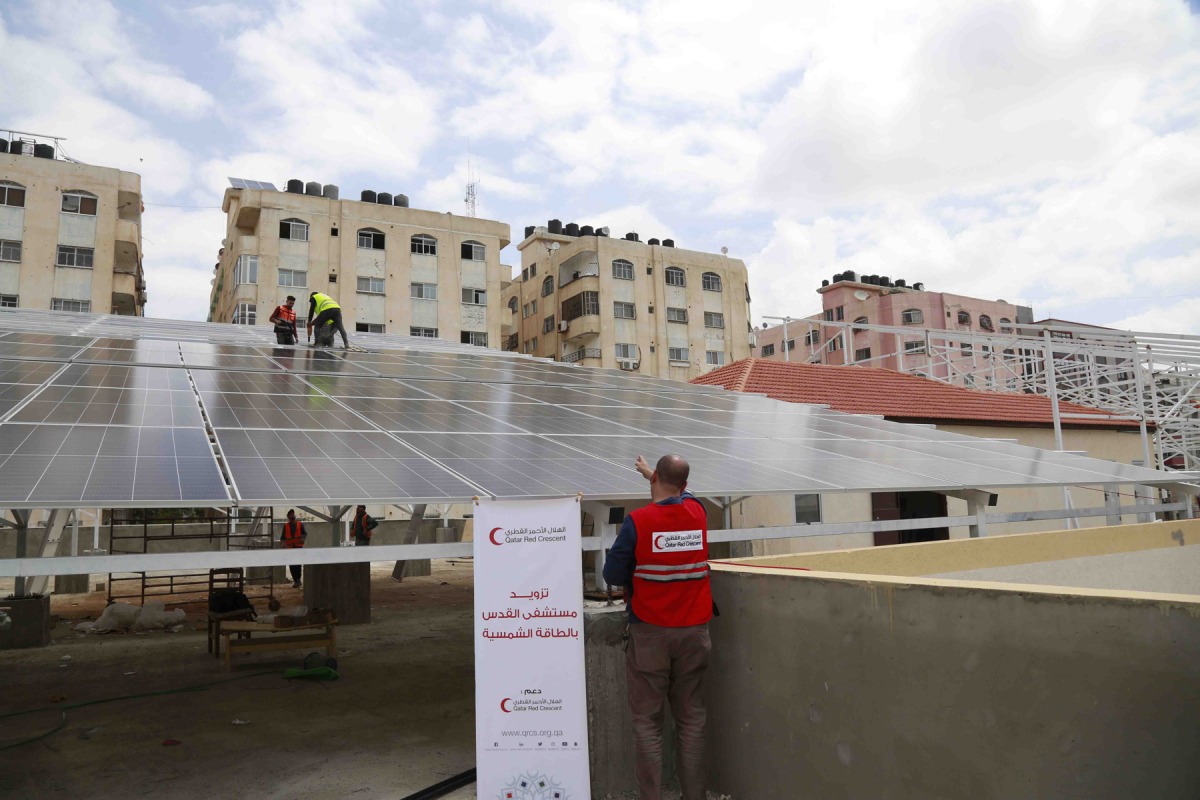A total of 20% of Gaza’s households relied on solar energy by 2022.
Qatar Red Crescent Society (QRCS) installed a QAR 1.6 million solar power system at the Al-Quds Hospital in Gaza on Tuesday, as the Palestinian city grapples with a severe electricity shortage under Israel’s ongoing blockade.
The project included the installation of 498 solar panels to provide the hospital with a 323-kilowatt electricity supply, QRCS said in a statement. The initiative allows the hospital to serve patients in the besieged city, which receives a daily average of 12 hours of electricity due to tight controls by Israel.
“This intervention by QRCS to provide Al-Quds Hospital with solar power will help deal with the lack of power supply needed to operate the hospital,” Dr. Bashar Murad, Director-General of the Palestine Red Crescent Society (PRCS), said.
The solar panel system is expected to cut the Palestinian organisation’s monthly operating expenses for power generators and fuel by 40%, the PRCS official added.
“QRCS has many projects to provide renewable energy in Gaza, to ensure the continuity of services for the residents of the blockade. These projects supported many health centres, local universities, and homes of poor families in several governorates in Gaza,” the Qatari organisation said.
The latest project comes just weeks after QRCS wrapped up a QAR 1.7 million solar power and water project in Gaza that aimed to provide much-needed power to tens of thousands of Palestinians living under Israel’s ongoing siege.
The Qatari entity installed a solar power system at three water wells in the Beit Hanoun municipality in addition to a water well at the Deir Al-Balah municipality in Gaza.
QRCS has implemented other similar projects in recent years to ensure the provision of crucial power supply for civilians in the besieged enclave, focusing on health facilities, universities, and homes of disadvantaged families in particular.
Shift to solar power
The Palestinian city has been under an illegal air, land and sea embargo by Israel since 2007 that has deprived its 2.3 million population of access to basic resources. Over the years, the limited power supply has forced Palestinians who are financially able to shift to solar power.
By 2022, a total of 20% of Gaza’s households relied on solar energy, per figures published by the journal Energy, Sustainability and Society.
The Israeli blockade has turned Gaza into what many Palestinians and rights groups have described as the world’s “largest open-air prison”.
Under Israel’s tight grip on basic resources, Gaza has faced what the United Nations described as “a chronic electricity deficit” that has been made worse by several rounds of Israeli aggression on the besieged city.
Gaza’s already-fragile power supply experiences further cuts or complete blackouts during Israel’s regular bombardments. The Israeli regime shuts Gaza’s only commercial crossing, Karm Abu Salem, during escalations, preventing the crucial entry of fuel trucks that keep the city’s sole power plant running.
Israel also controls up to 90% of water access in the besieged city, where more than 96% of its aquifers are not safe for consumption. Israel’s chokehold over basic resources forces Palestinians to buy water at inflated prices despite their full right to access it for free.







